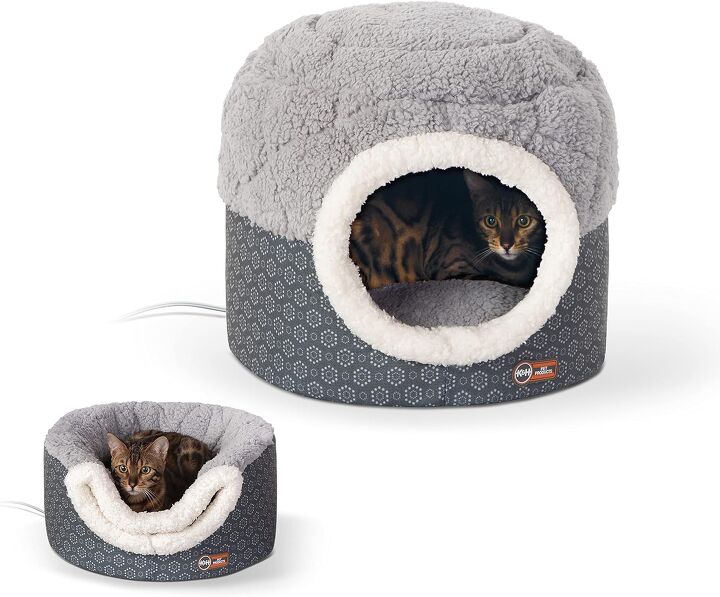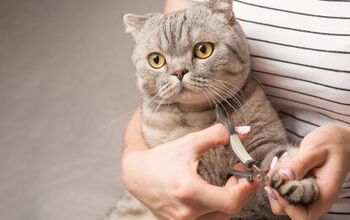Hypothermia in Cats: What You Should Know

Hypothermia puts your cat’s health at risk, and if not treated in time, can be fatal. So, it’s wise to know even just the basics about hypothermia so you can recognize the symptoms and get your cat the help they need right away. Here’s a short guide to get you started.
What Is Hypothermia in Cats?
A cat’s normal body temperature is 100.5-102.5°F (38.1-39.2°C). Hypothermia, which can range from mild to severe, occurs when a cat’s body temperature drops below the normal range. The further the temperature drops, the more dire the situation.
What Causes Hypothermia in Cats?
If a cat is exposed to cold, wet, or windy conditions for too long, they can develop frostbite and hypothermia, so kitties who spend a lot of time outside are at risk (one of many reasons to keep your cats indoors).
However, both indoor and outdoor cats can become hypothermic. Cats with certain health problems or injuries may be at risk of hypothermia. Some cats are also at risk when they need to go under anesthesia for a medical procedure.
In addition, kittens and seniors, as well as underweight kitties and hairless cats, are more susceptible.
What Are the Symptoms of Hypothermia in Cats?
Knowing the signs that a cat feels cold can help you take action right away to warm your pet up. Also, bear in mind that there are a few stages of hypothermia, so the condition can start off mild and then worsen—this is why it’s important to bring your cat’s body temperature up as soon as possible.
Here are some of the symptoms of hypothermia in cats:
- Shivering
- Feeling cold to the touch
- Lethargy
- Changes in breathing
- Weakness
- Stiffness
- Unresponsive
- Confusion
- Changes in heart rate and rhythm
- Pale gums
- Low blood pressure
- Loss of consciousness
- Collapse
How Is Hypothermia in Cats Treated?
Because hypothermia is dangerous and can lead to a host of health problems or even death, it’s important that you don’t waste any time.
Get in touch with your veterinarian or an emergency veterinary clinic
Contact your veterinarian if your cat is showing signs even of mild hypothermia. They can advise you on what steps to take to warm your cat up safely, and can tell you if your cat needs to be examined and treated at the vet’s office. If you need to bring your pet to the vet, they can also provide guidance on how to keep them warm on the way there.
Check your cat’s temperature
If you have a pet thermometer, you can use that at home to check your cat’s temperature. Knowing your pet’s temperature will also be useful when contacting your vet to let them know what’s going on.
An example of a thermometer you can purchase for home use is the iProven DT-K117Y Pet Thermometer, which has a flexible tip to help make the experience more comfortable for your cat. It’s also waterproof for easy cleaning, gives results in 20 seconds, and comes with a storage case.
Warm your cat up
The goal is to warm your cat up gradually, not too quickly. If there is an underlying condition causing the hypothermia, that will need to be treated as well with the help of your veterinarian.
To warm up your cat, bring them to a cozy spot in your home, such as near a heat source, and dry them gently with a warm towel if they are wet.
You can wrap a blanket around your cat (for a bit more warmth, toss the blanket in your dryer first). You can also use a heated cat bed, heated cat pad, or hot water bottles to provide extra warmth—just make sure that your cat’s body isn’t in direct contact with hot items like heated water bottles or heating pads, as you don’t want to cause discomfort, pain, or burns.
An example of a heated bed is the K&H Thermo-Pet Nest Heated Cat Bed. What’s nice about this product is that it can be used in two ways: as a comfy cave or as a bed with high, supportive sides. It uses a 4-watt heater to automatically warm up to your kitty’s normal body temperature once your pet is in it. Plus, it’s machine washable after the heater is removed.
Note: It can take hours for your pet’s body temperature to return to normal (you can track the temperature with a thermometer). Some cats need to be hospitalized to overcome hypothermia.
How Can Hypothermia in Cats Be Prevented?
There are simple ways to prevent hypothermia in cats. First, keep your pet indoors, especially when it’s cold, windy, raining, or snowing outside.
If your feline loves spending time outside, it’s best to be out there with them, supervising them and keeping them close on a leash and harness. Otherwise, set up an outdoor enclosure that can provide protection.
Remember, hypothermia can also be caused by underlying health issues, so having your cat examined by a veterinarian regularly is a good way to catch problems that require treatment.
Take Hypothermia in Cats Seriously
Although it might not be something that you’ve thought about, if your cat becomes hypothermic, it’s a serious problem that requires prompt treatment. Now that you know a bit more about it and the importance of working with a vet to get your kitty’s body temperature back up to normal, you can take even better care of your feline friend.
Join the PetGuide community. Get the latest pet news and product recommendations by subscribing to our newsletter here.

Lisa Selvaggio is a freelance writer and editor, and our resident cats-pert, with certifications in pet nutrition and pet first aid. She enjoys producing content that helps people understand animals better so they can give their pets a safe and happy home.
More by Lisa Selvaggio

























